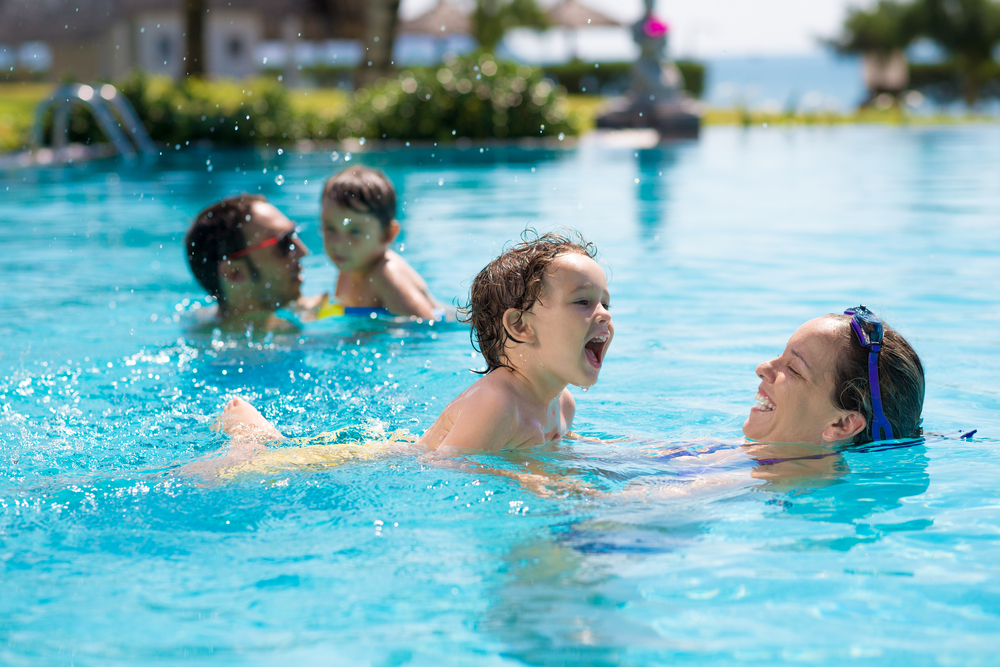An Overview Of Pool Disciplines And Lifeguard Training ALA

Of course, so that you can better understand how you can design the lifeguard training or just the swimming training in a lifeguard class, you first have to know what you are training for – i.e. define the goal. That’s why I’ll briefly introduce you to the disciplines from the age group Open (19 years and older). There are six pool disciplines, four of which you must choose. The routes for the younger ones have been modified and no dolls are swum up to the age of twelve.
50m doll: 25m freestyle, fully filled doll (about 50kg weight) must be picked up from the pool floor within 5m, 25m doll tow
100m manikin with fins: 50m freestyle with fins, manikin recording within 10m, 50m manikin with fins
100m Combined Rescue Exercise: 50m Freestyle, 17.5m Dive, Manikin Pickup, 32.5m Manikin Tow
100m Lifesaver: 50m freestyle with lifeguard and fins, half-filled doll is held at the edge of the pool by a helper, the swimmer latches the lifesaver’s buoyancy device around the manikin and swims another 50m with it.
200m Super Lifesaver: 75m freestyle, puppet pickup, 25m puppet, drop puppet and put fins and harness rescuer on, then the 100m Lifesaver as previously described.
200m obstacle: After 12.5m, an obstacle (approx. 70cm deep) is attached to the lines. The swimmer swims 200m freestyle and has to dive under the obstacle 8 times.
In the disciplines just presented, there are some rules that you must follow as a swimmer. However, I will not explain this further, as it would go beyond the scope of the article.
Benefits Of Lifeguard Training
When you plan your lifeguard training, you rarely swim through the entire discipline like you would in a competition. And you don’t combine obstacle swimming with a finless/finned doll. As in any other lifeguard class, you focus on one or two main series.
This can look like this, for example:
- Swim in 300m (any)
- 4x50m obstacle GA 2 P:15sec.
- 200m obstacle GA 1
- 4x50m obstacle GA 2 P:15sec.
- 200m obstacle GA 1
- 100m freely as you like
- 2x100m obstacle upper GA 2 P:20
- 4x50m obstacle progressive P: 15
- 2x100m obstacle upper GA 2 P:20
- 4x50m obstacle progressive P: 15
- Swim out: 200m any
It is also possible to swim the first part up to “100m easy” with an obstacle and the second part only crawl or vice versa.

A Second Example With Doll:
- Swim in 300m any
- 10x50m= 1) 15m dolphin kick dive, 35m crawl 2) 25m crawl, 10m dive, 15m crawl P:20sec
- 100m swim fins
- 4x100m = fins 50m crawl, 50m doll P: 20
- 200m back kick with fins
- 4x75m= fins 25m dolphin kick diving, 25m crawl, 25m doll P:15
- 100m freely without fins
- 4x200m Freestyle Change of pace 1) 50m Freestyle sprint, 150m Freestyle 2) 50m Freestyle, 50m Freestyle sprint, 100m Freestyle 3) 100m Freestyle, 50m Freestyle sprint, 50m Freestyle 4) 150m Freestyle, 50m Freestyle sprint P: 30
- Swim out: 200m any
It is important for rescuers to have good lung capacity. Therefore, it makes sense to regularly promote your breathing through various exercises during lifeguard training. However, it is also possible to include layers in the training plan.
Open Water Disciplines
But not only in the swimming pool can the rescue sport for the triathlon set you new stimuli, but also in open water.
Surf Swim (Surf Race): You start from the beach, run into the water, swim a distance of 400m and run back out to the finish line. Sometimes this discipline is held as a run/swim/run. The running distance is a bit longer than in the surf race. Running is a part of lifeguard training in order to make your body strong and increase swimming endurance.
Life Board (Board Race): With the life board you start from the beach, run into the water and jump onto the board – either lying down or on your knees. You complete a distance of 600m.
Rescue Ski (Surf Ski Race): With the ski, you start from knee-deep water. After the starting signal, you jump in and paddle a distance of 700m.
Rescue triathlon: The three previously mentioned disciplines are completed one after the other. The order will be drawn in advance.
Beach flags: From the prone position you have to turn around after the start signal and sprint about 20m to a pole. Since there are fewer batons than competitive athletes, athletes are eliminated in each round.
Beach Sprint: You sprint a distance of 90m on the beach.
Final Words:
In all disciplines in open water, you need a good reaction speed. The lifeguard training to improve swimming for this is more complex, however, since the rescue skis and rescue board have to be transported to the lake. But if you haven’t heard of such disciplines yet, you can simply try Beach Flags, Beach Sprint or Surf Race. Definitely a lot of fun with a group and gives them new energy for running and swimming.
For more information on different types of pool disciplines and lifeguard courses, feel free to contact the American Lifeguard Association (ALA).



